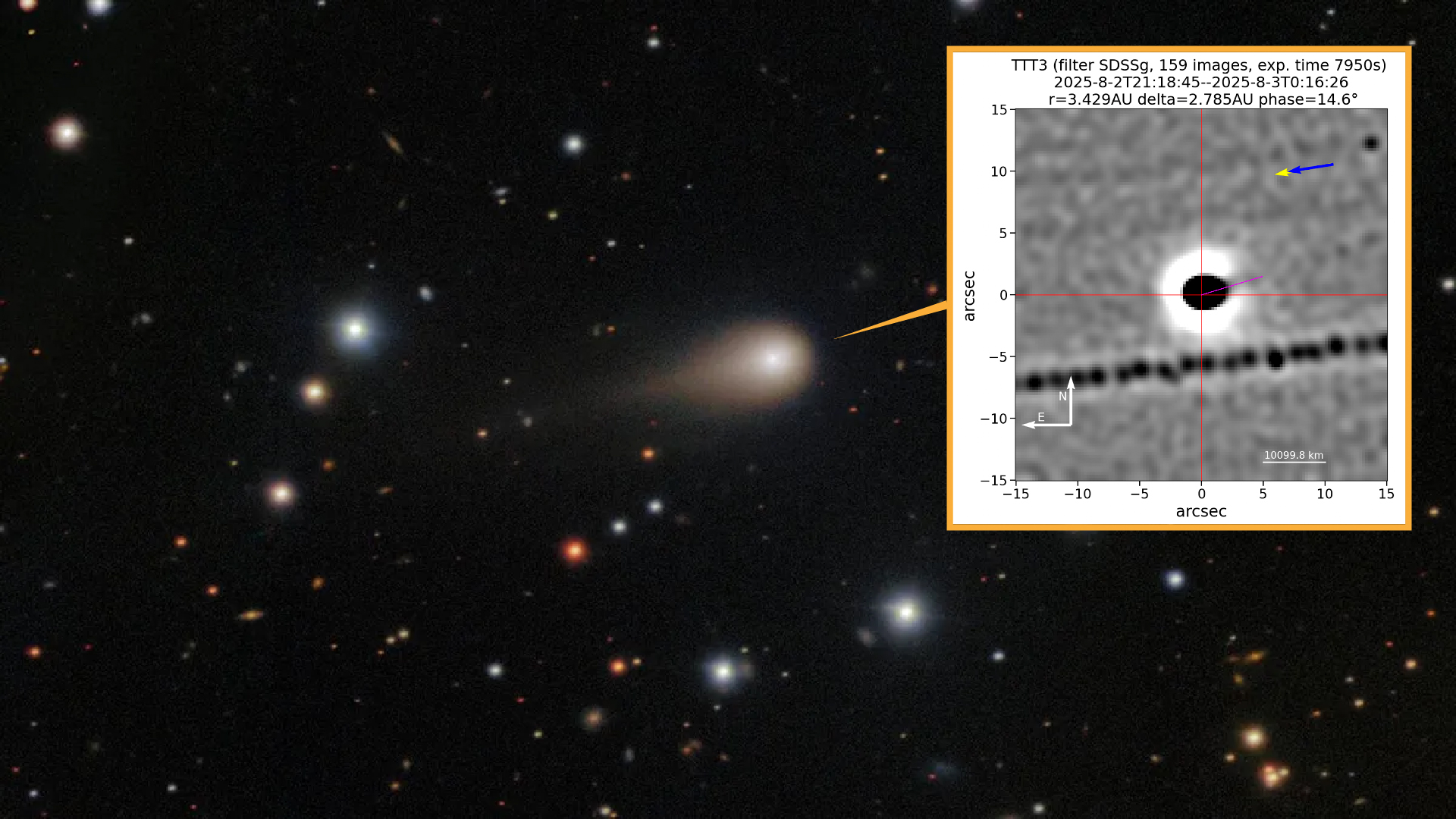The Strange Visitor from Beyond: 3I/ATLAS
The Strange Visitor from Beyond: 3I/ATLAS

Imagine a comet hurtling through space — but not from our own solar system. It comes from beyond, behaves in odd ways, and challenges what we thought we knew about comets. That’s exactly what the interstellar visitor 3I/ATLAS appears to be.
Interstellar Origins: A Comet Not Bound by the Sun
3I/ATLAS has been identified as only the third object known to have originated outside our solar system, following 1I/‘Oumuamua and 2I/Borisov.
Key facts:
-
It has an eccentricity of about 6, and an incoming speed of ~ 57 km/s — too fast to be bound by the Sun’s gravity.
-
Its nucleus is estimated to be between 0.44 km and 5.6 km in diameter.
-
All this confirms that we’re looking at a true “interstellar object” — basically something that came from outside our solar system.
A Tail that Points the Wrong Way
One of the strangest features of 3I/ATLAS: its tail doesn’t behave like most comet tails.
-
At around 4 astronomical units (AU) from the Sun, it showed a sunward-pointing tail (an “anti-tail”) — instead of the usual tail that points away from the Sun.
-
The explanation? One model suggests that on the sunlit side of the nucleus, CO₂ sublimation releases water-ice grains, which then scatter light in a way that produces a sunward tail. Over time, as the object moved nearer to the Sun, larger dust/volatile grains took over and the tail shifted into a more conventional antisolar direction.
This behaviour doesn’t necessarily mean it’s artificial, but it is rare — giving scientists an excellent opportunity to test comet-physics under unusual conditions.

Unusual Composition: Clues from the Chemistry
Beyond the tail behaviour, the chemical fingerprint of 3I/ATLAS raises additional questions:
-
It has a very high CO₂ to H₂O ratio, among the highest observed in any comet.
-
Spectroscopy suggests unusually high nickel content and lower than typical iron content.
These deviations don’t automatically imply something non-natural or alien, but they do suggest that this object formed in a very different environment — perhaps a different star system altogether.
Why It Matters: What We Learn from Such an Object
The discovery and study of 3I/ATLAS carry several important implications:
-
Diversity of interstellar bodies: Objects from other star systems may come with unfamiliar compositions, behaviours, and histories — broadening our understanding of what planetary / small-body systems can look like beyond our solar neighbourhood.
-
Tail and dust‐grain physics: The sunward tail transitions and dust/ice behaviours under varying solar distances give us new data for models of sublimation, radiation pressure and dust dynamics.
-
“Alien probe” speculation-safe zone: Because of its odd features, some scientists (including a team co-authored by Avi Loeb) have floated the idea, as a thought experiment, that this object might show technosignatures or artificial origin possibilities. That said — no direct evidence supports that; natural origin remains overwhelmingly more likely.

What’s Next? The Road Ahead
There’s still much to learn. Ongoing and future observations will focus on questions like:
-
How will the tail evolve as 3I/ATLAS approaches perihelion (closest point to the Sun)?
-
How will dust production rates and compositions change with solar heating?
-
Are there any non-gravitational accelerations (i.e., deviations from expected orbital motion) that might hint at unusual release mechanisms?
Final Thoughts
In short: 3I/ATLAS is not just “another comet” — it’s a visitor from afar, offering a rare glimpse into how small bodies might behave in entirely different planetary systems. Whether natural or something more exotic, it forces us to expand our horizons — literally and figuratively.
If you love space science, cosmo-mysteries or simply the notion of “outsider” objects visiting our cosmic neighbourhood: keep an eye on 3I/ATLAS. Because in studying it, we’re not just learning about one object — we’re learning about what’s possible elsewhere in the universe.
Suggested Blogging Enhancements
To make this blog post more engaging, you might consider:
-
Adding an introductory hook (e.g., “What if a visitor from another star system just passed by our Sun?”)
-
Using section headings (as above) to break up long text
-
Embedding high-resolution images or artist impressions of the object / tail behaviour
-
Including a “Further reading” section with links to original research or NASA/astronomical observatories
-
Wrapping up with a call to action for readers: “What do you think this object might be? Share in the comments.”
Comments
Post a Comment